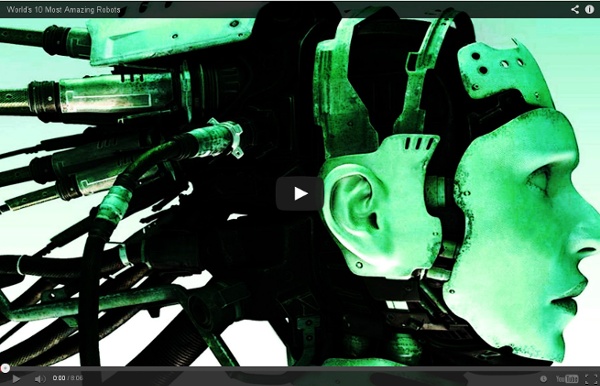



http://www.youtube.com/watch?v=hYo2EPYXGhU
Related: Robotics • mecanimal approachUnfair Advantages of Emotional Computing Unfair Advantages of Emotional Computing Earlier this week, Softbank CEO Masayoshi Son announced an amazing new robot called Pepper. The most amazing feature isn't that it will only cost $2,000, or that Pepper is intended to babysit your kids and work the registers at retail stores. What's really remarkable is that Pepper is designed to understand and respond to human emotion. Heck, understanding human emotion is tough enough for most HUMANS. There is a new field of "affect computing" coming your way that will give entrepreneurs and marketers a real unfair advantage.
Why Not Make Use of Artificial Intelligence To Secure Your PC From Malicious Programs? Hello readers. Today, I was scanning my PC and what I found 35 viruses, 20 malware, and other nasty programs that were in my PC without my permission. I hope this happens with you all too. I was amazed that even after using the best anti-virus software, still there is an invasion of such malicious programs in my PC. Therefore, I thought why not to make our devices intelligent using artificial intelligence to keep these dirty programs away from entering my PC.
Robotic Nation, by Marshall Brain I went to McDonald's this weekend with the kids. We go to McDonald's to eat about once a week because it is a mile from the house and has an indoor play area. Our normal routine is to walk in to McDonald's, stand in line, order, stand around waiting for the order, sit down, eat and play. On Sunday, this decades-old routine changed forever. The Personality Forge AI - About Artificial Intelligence Chat Bots Welcome to the Personality Forge, an advanced artificial intelligence chat bot platform and living community of chat bots and people. Here people create and work on AI Personalities called chat bots who, once created, have an independent existence, chatting with both real people and other chat bots. While you're away, they're having conversations, making friends, and making memories that you can look in on. The Personality Forge's AI Engine integrates memories, emotions, knowledge of hundreds of thousands of words, sentence structure, unmatched pattern-matching capabilities, and a scripting language called AIScript. It's the heart and mind of all the bots here, and it's easy enough to work with that you need no programming experience to get started. Read more about the AI Engine's features.
sealed 32scene The first implementation of von Neumann's self-reproducing universal constructor.[1] Three generations of machine are shown: the second has nearly finished constructing the third. The lines running to the right are the tapes of genetic instructions, which are copied along with the body of the machines. The machine shown runs in a 32-state version of von Neumann's cellular automata environment, not his original 29-state specification. John von Neumann's Universal Constructor is a self-replicating machine in a cellular automata (CA) environment. It was designed in the 1940s, without the use of a computer.
www.yankodesign One Sharp Black Lambo From the darkest depths of the design mind of the one called Slavche Tanevski comes THIS! The Lamborghini *Ankonian. It’s black. It’s sharp. It’s just fabulous. Heroes: What They Do & Why We Need Them By Scott T. Allison and George R. Goethals People often ask us why we need heroes. A Wikipedia for robots (Credit: TU/e) European scientists from six institutes and two universities have developed an online platform where robots can learn new skills from each other worldwide — a kind of “Wikipedia for robots.” The objective is to help develop robots better at helping elders with caring and household tasks. “The problem right now is that robots are often developed specifically for one task”, says René van de Molengraft, TU/e researcher and RoboEarth project leader.
body example Figure 1 : The ribosome assembles polymericproteinmolecules whose sequence is controlled by the sequence of messenger RNA molecules. This is required by all living cells and associated viruses. The sequence of DNA encoding for a protein may be copied many times into messenger RNA (mRNA) chains of a similar sequence. Ribosomes can bind to an mRNA chain and use it as a template for determining the correct sequence of amino acids in a particular protein. Amino acids are selected, collected and carried to the ribosome by transfer RNA (tRNA molecules), which enter one part of the ribosome and bind to the messenger RNA chain. The attached amino acids are then linked together by another part of the ribosome.